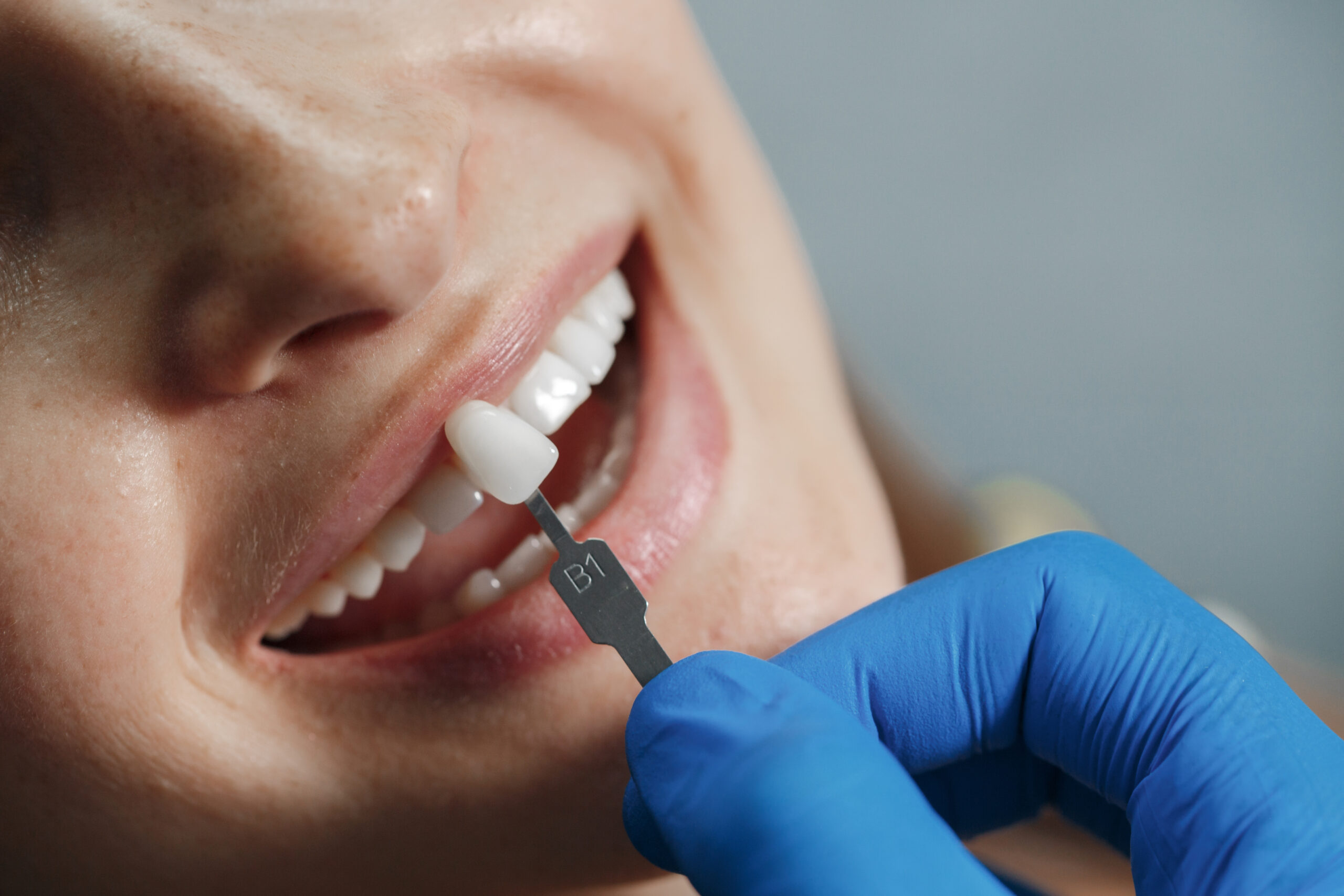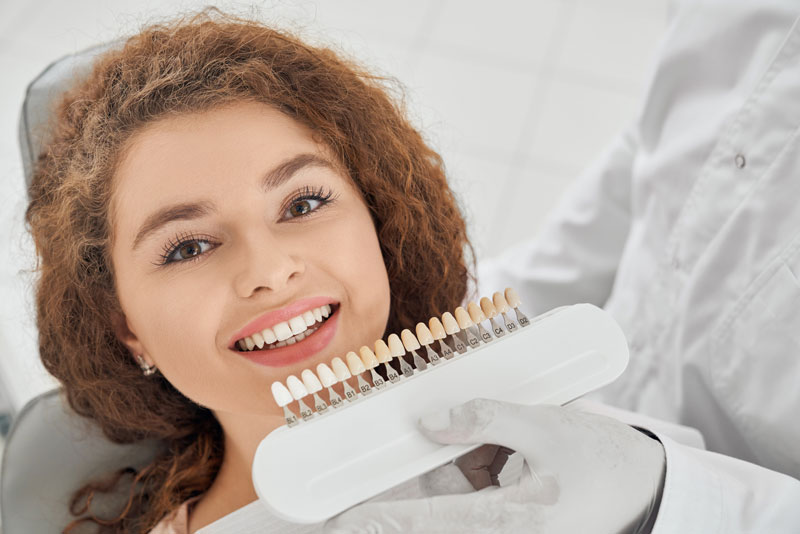Zirconium Veneer
Zirconium is the highest quality dental coating product that has been achieved to date in terms of aesthetics, durability, tissue compatibility and naturalness, which are the basic requirements of dentistry.
Aesthetic dentistry is moving away from metal-based porcelains every day. In this system, which has all the features we want such as biological harmony, natural appearance, aesthetics and mechanical resistance, zirconium, a white alloy, is used instead of metal as a substructure.

Zirconium veneers are safely preferred because they are both aesthetic enough to be used on the front teeth and robust enough to be used on the back teeth. This only increases the quality of life of patients with zirconium veneers.
Where Are Zirconium Veneers Used?
- Correction of broken teeth
- People who have already had their teeth cut
- To unite the separated teeth (diastema closure),
- People with a metal-supported bridge-crown (crown) in their mouth
- Correction of old fillings that have deteriorated color and structure
- In teeth with excessive loss of material that cannot be filled
- Correction of crooked and crooked teeth (as an alternative to orthodontic treatment)
- Zirconium veneers are used in advanced (antibiotic, fluoride, etc.) discolorations that do not get results with methods such as bleaching, and in hereditary structure discolorations.
What is the Difference of Zirconium Veneers?
- With its insulating feature, hot and cold sensitivity does not develop.
- Since zirconium transmits light, it creates an aesthetic very similar to the natural tooth structure, even very well-made metal-supported porcelains have a dullness and artificiality. For this reason, zirconium is preferred especially for front teeth.
- Metal-backed porcelains give the appearance of a dark cavity in some lights, as if they are not in the mouth. Zirconium, on the other hand, passes all kinds of light just like natural teeth.
- Metal-backed porcelains, crown-bridge (veneers) are mechanically bonded to the tooth. Zirconium is mechanically and chemically attached to the tooth. Therefore, their retention is much higher than metal-backed ones.
- Since there is no metal in the substructure, there is no dark line at the crown – gum line. A more aesthetic appearance is provided.
- Since porcelain surfaces will be extremely smooth, it minimizes staining and tartar formation caused by smoking and similar reasons.
- It does not change color with external factors such as coffee, tea and cigarettes.
- It is a healthy material that does not cause bad taste in the mouth, gum problems and bad breath.
- The pressure and bruises that occur in the gums due to the previously made metal-supported porcelain crowns are completely eliminated with the application of zirconium crowns, and an aesthetic and natural appearance is obtained.
- When the gum recedes, zirconium retains its aesthetic appearance, while metal-supported porcelains create a bad appearance in the area where they merge with the tooth.
- The risk of allergy to some metals (nickel, etc.) used in the substructure does not exist in zirconium-supported porcelains.
- Since it is perfectly compatible with our body, it can be easily used in people who have gum disease or who are prone to gum disease. Its harmony with the gums is very good and it does not cause gum problems if oral hygiene is given importance.
How to Prepare Zirconium Substructured Veneers?

First, impressions are taken from the teeth for zirconium substructured veneers. Until the next stage, temporary veneers are made and glued to the tooth surfaces so that the tooth surfaces do not look aesthetically empty. This also prevents possible sensitivity in the teeth.
In the second stage, the gum harmony is checked with the infrastructure rehearsal prepared in
the laboratory. In the last stage, an aesthetic rehearsal is performed. Before the bonding process, one or two sessions are spent on the teeth and gums of the models
prepared in the desired tooth color and shape, which are decided at the beginning.